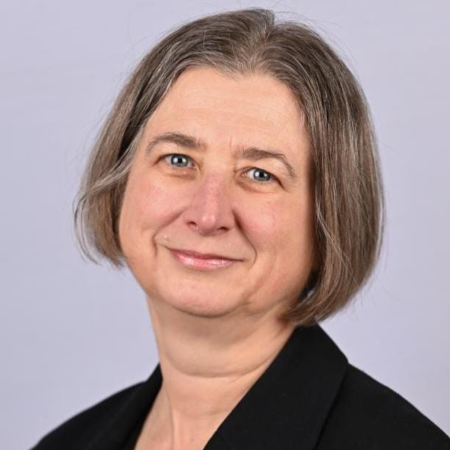Breathing new life into insuring trade with Toredo
When it takes the same amount of time to underwrite the risks of a power station as a letter of credit, something had to give. Chris Hall, Senior Underwriter, Liberty Specialty Markets discusses Toredo, a web-based platform which moves trade credit insurance underwriting into the digital era

TXF: Toredo’s an interesting name. What does it mean and where does it come from?
Chris Hall (CH): It’s actually the Japanese word for trade, so for us it’s a helpful pointer to what we are trying to do on the system and the sorts of assets we’re looking to try and work with and insure.
TXF: You bound your first trade credit risk on your electronic platform in June, from your launch in March – congratulations. Tell me about Toredo’s journey.
CH: Thanks. It’s been a labour of love for a number of us, and it’s been about 12 months end-to-end from the conception of ‘how do we make this work?’ to the delivery of how we make it work. It’s been a real team effort across a number of parties in Liberty. It involved compliance, IT, marketing teams and that’s before you get to underwriting and the various front office teams.
In reality it was a case of having a clear goal of where we wanted to get to and a system to allow us to write things efficiently. So a goal and a path of how to get there, which has taken some time.
So what it Toredo? It’s an online system to allow quick and efficient underwriting of trade credit risk for our clients and brokers. We’ve onboarded capacity, it’s there, ready to be used and the pricing is pre-loaded, so we’ve effectively pre-underwritten. And that’s something that’s relatively new in our market, and certainly for Liberty. It’s to allow us to handle some of the inefficiencies we’ve observed in the past.
TXF: What is the problem you are trying to solve in the insurance industry for trade?
CH: The traditional Lloyd’s market model involves a broker getting an inquiry from their clients, who will then come to speak to us either in Lloyd’s or via email or phone to see whether we have any interest in the transaction. Then there’s a lot of to-ing and fro-ing, and even once we’ve all agreed that there’s a transaction that we all wish to do, it’s then bound in a very old fashioned paper-based format with a scratch applied as signature. That’s the traditional model which is quite inefficient and involves lots of running around after each other.
Toredo removes much of that by having an electronic version and the inquiry and response inquiry are done on the system. It takes lots of the time and the legwork, and indeed the shoe leather, out of the equation.
TXF: Why is it so difficult and time consuming to write single situation trade credit efficiently?
CH: Single situation covers a very broad range of inquiries. It could be everything from a huge refinery and the part we might play in that, all the way down to a very small single transaction. The part we’re aiming at is probably what our banking and trader clients would term ‘trade finance’. It tends to be a volume game with relatively smaller transactions.
If you underwrite them individually, they tend to take roughly the same amount of time to do say a million dollar letter of credit (LC) as it would to assess a $1-10 billion refinery. However, the volume of the smaller value transactions makes it something that’s quite difficult to do on a case-by-case basis.
Taking a step back and almost pre-underwriting removes some of that issue around the volume from the system.
TXF: How can you provide transparency in the rather opaque world of trade credit insurance?
CH: It involves two things. First is understanding what our clients are looking for. That’s critical in any walk of life. Then it is actually understanding what it is we are looking to assess. We have put in a lot of effort and thinking in terms of how we make this work.
We’ve uploaded our capacity onto the system, so that is visible by any of our onboarded clients or brokers. They can see that on a certain bank or corporate we are currently willing to underwrite x amount of capacity with these parameters around tenor and pricing and how much of an indemnity we are willing to provide. That’s part one.
Part two then involves the pricing of that transaction. We have uploaded what we believe to be very accurate market pricing and that has certain algorithms in the system. If a client comes and asks to quote on a transaction where we are showing we have capacity and availability the system will give them what we think is a good quote and then they can ask us to take it forward and bind from there.
TXF: Which obligors and what capacity are currently on the system?
CH: When we launched the system, we launched with financial institutions – bank obligors. We talked about it being 418 obligors across 72 countries and about $27.5 billion of capacity.
That’s since gone up and we’ve now looked in more detail at various refineries and the sorts of trader-type business and various oil and energy-type companies [which] are going on the system on a fairly regular basis. We are also reviewing the countries. With 72 at launch, there are about 200 or so, if you take off the sanction countries, so we still have a way to go.
But the key thing for us was to get an initial tranche of capacity available and uploaded and we build on that and iterate as we go forward.
TXF: Can you talk me through the process of how do you see who is providing capacity. Say, I want a $2 million LC from a country and I want a certain percentage indemnity, tell me how I go about it?
CH: Of course. At the moment the system is accessed by brokers on behalf of their clients (although that access will become open to clients later this year). Whoever it is putting the inquiry in puts some fairly simple information in about the transaction they are looking to get cover on.
In your example, let’s say there’s a LC for $2 million issued by such-and such bank in such and such country and the length of the transaction is, say, a few months, there are easy drop-down boxes or free format boxes [which can be] sent through to us from there. That generates a quote which will say how much of their requirement we can cover. Assuming we can do that for $2 million and maybe looking for 90% [cover], so we will be providing $1.8 million of cover, the system will say ‘we can offer $1.8 million cover at – let’s say – 50 basis points’. It’s nice and transparent, very quick, probably a minute to two minutes max from inputting the initial information to getting to a point where you have a meaningful quote.
TXF: Is there still human interaction in the process?
CH: To an extent, yes. Although we have an electronic system it’s not necessarily the be-all and end-all. We have an underwriting team that sits behind that system. It has two main roles, one is speaking to potential clients in the first place and making sure they are comfortable with the idea of what we are doing and how we are doing it.
Secondly, there’s a further intervention role as if a client brings a transaction to us with an obligor we’ve not yet assessed or a country we’ve not assessed we can then work it through with our various credit analysts and look to bring it onto the system if we are able to get comfortable with it.
TXF: How important is collaboration in this model?
CH: Very. Collaboration is key. You inevitably have collaboration between us and our clients an our brokers but there’s a further level. That $27.5 billion of capacity I alluded to at the start is actually a team effort. We have formed a consortium [the London Credit Consortium] led by Liberty with the Channel Syndicate and Canopius. We take roughly a third in all of that capacity.
We have worked together and a lot of that initial underwriting has been done as a team effort. Further capacity and if we get new requests, is done in concert with our two partners. Without collaboration we wouldn’t have been able to get as far down this road as we have.
TXF: Is there still paper in the system?
CH: I would love to say we’ve entirely removed the need to have paper involved, but we’ve not quite got there yet! Simply speaking we onboard a client effectively using a master insurance policy. That unfortunately is done on paper in the more traditional sense in that we sit down with a client and where necessarily their broker to work out some mutually convenient wording, sign it (stamp it), and then that is uploaded as being the master contract.
Everything then is done as declarations to that master contract, that is, it is effectively an addendum to that contract which means we don’t then have to exchange reams of paper every time.
I’m sure that some of our clients, and indeed, some of my colleagues still like to print out the odd sheet of paper or two but we’re working on trying to remove as much of that as possible.
TXF: You’ve mentioned visibility of capacity, price, speed. What about security? How secure is the whole system?
CH: Toredo is an online system. While not professing to be an IT security expert myself we’ve had a fair amount of testing on the system. Much of the information is in a secure cloud-based server and I’m told this server company has won multiple awards for their security. While that sounds rather nebulous in itself – no pun intended with the cloud – it’s as secure as it can be. Toredo itself is based on some fairly long established technology which to date hasn’t had any security issues. We have only enhanced the original.
TXF: You’ve got big plans for Toredo, talk me through how you see the future with it.
CH: We do indeed have big plans for Toredo. For us it’s a system that allows us to get access to a class of business that we’ve always really liked. If you look at the ICC data, the default rates and loss rates on this class of business are tiny, it’s just been the efficiency that we’ve found hard to handle. It allows us to handle some of that and to knock off some of the objections and issues with supporting our clients. We’ve historically supported clients well in the mid- and long-term transactions which feels counterintuitive.
We could go a number of different directions with Toredo. We could use it as a binding tool for some of our longer, more complex types of business. Although the system isn’t set up to handle [that type of business] from start to finish, it could be used to gain some efficiencies at the end.
It could also be used for different classes of business. One of the types that many of our clients use is surety. Surety is by itself relatively simple and not too dissimilar to some of the trade finance type instruments and it could be used, for instance in marine, terrorism, other similar classes of insurance.
Other potential avenues for us are can we use Toredo as a way of handling various programmatic-type transactions. Multilaterals, for example, have huge trade facilitation programmes and there’s nothing to say that we couldn’t partner with one of them to use Toredo as a system to help them gain some efficiencies with their huge volumes of transactions while at the same time working with their various capacity providers to join it all up.
TXF: Is there anything that Toredo will do to help with visibility and transparency in the system that’s sadly lacking at the moment?
CH: I think Toredo offers a lot of transparency, as we’ve discussed, just in terms of what our consortium has put onto the system is very visible in terms of the names we’re willing to look at, the parameters we are willing to look at for those names and, indeed, the pricing. I’d like to think that the fact that we are trying to set out our stall to be open and transparent can only be a good thing.
That’s good for us as it shows people what we will be willing to do, but it’s also good for our clients because they can see much more quickly what we’re able to do, our brokers can see what we’re able to do and by extension hopefully avoid some of that running around.





